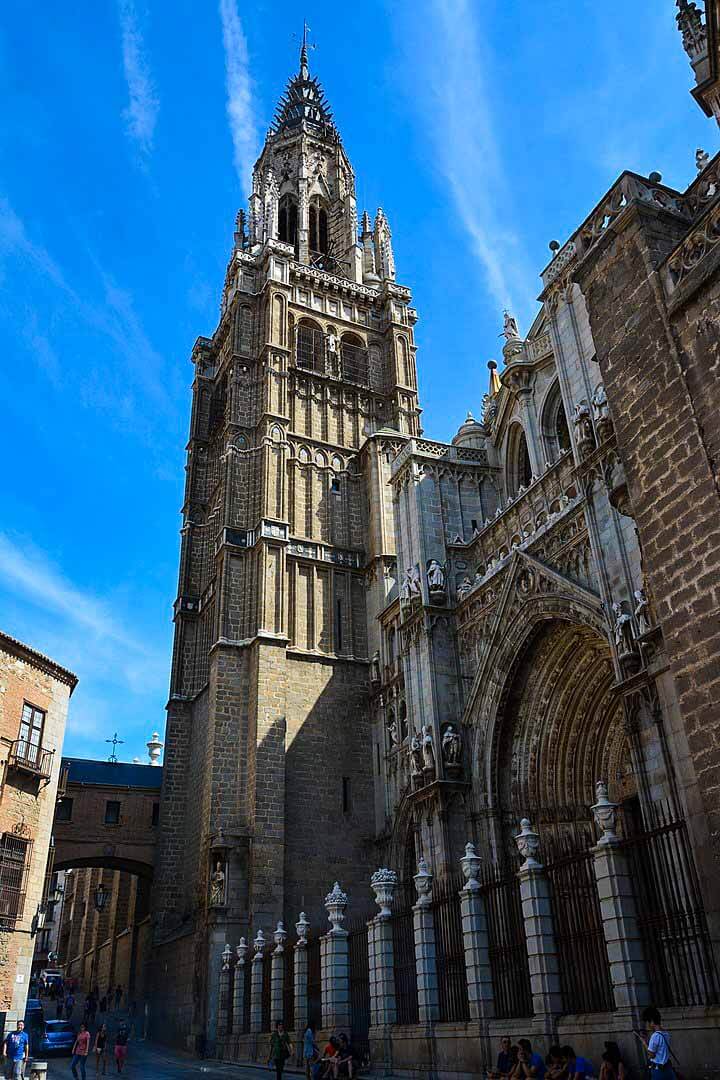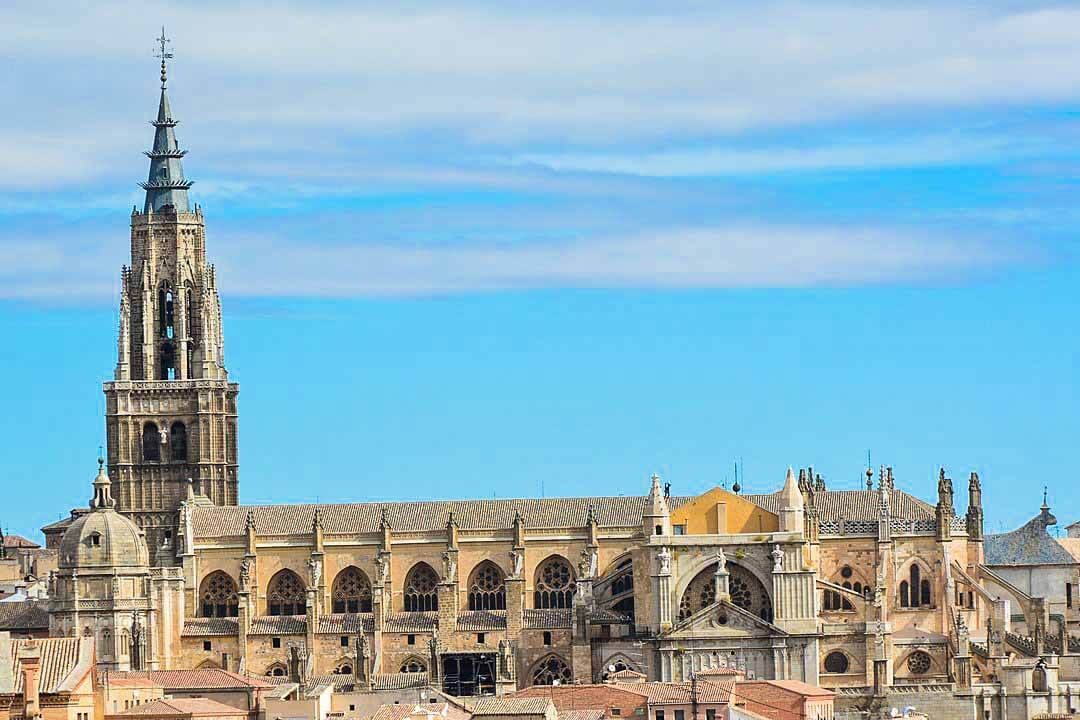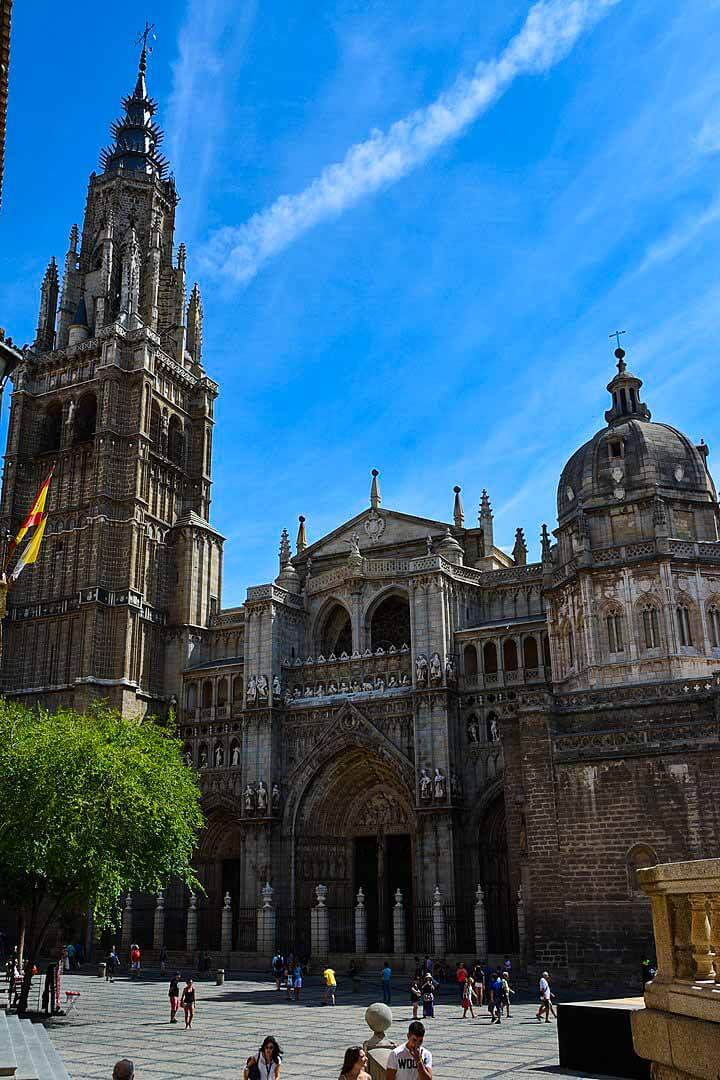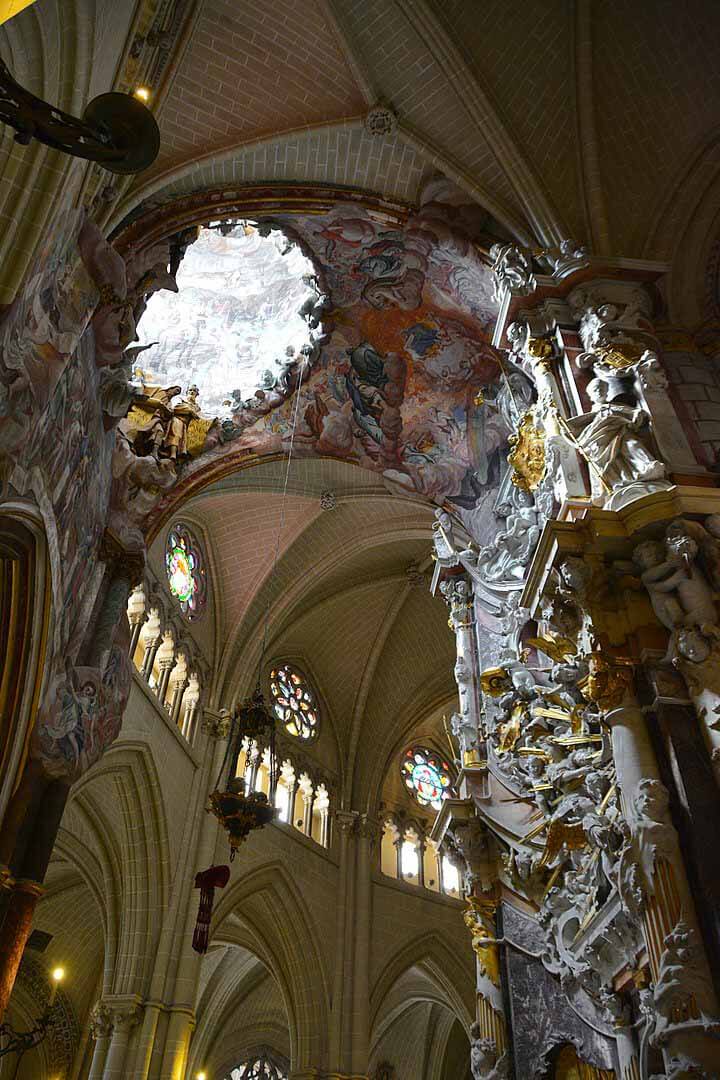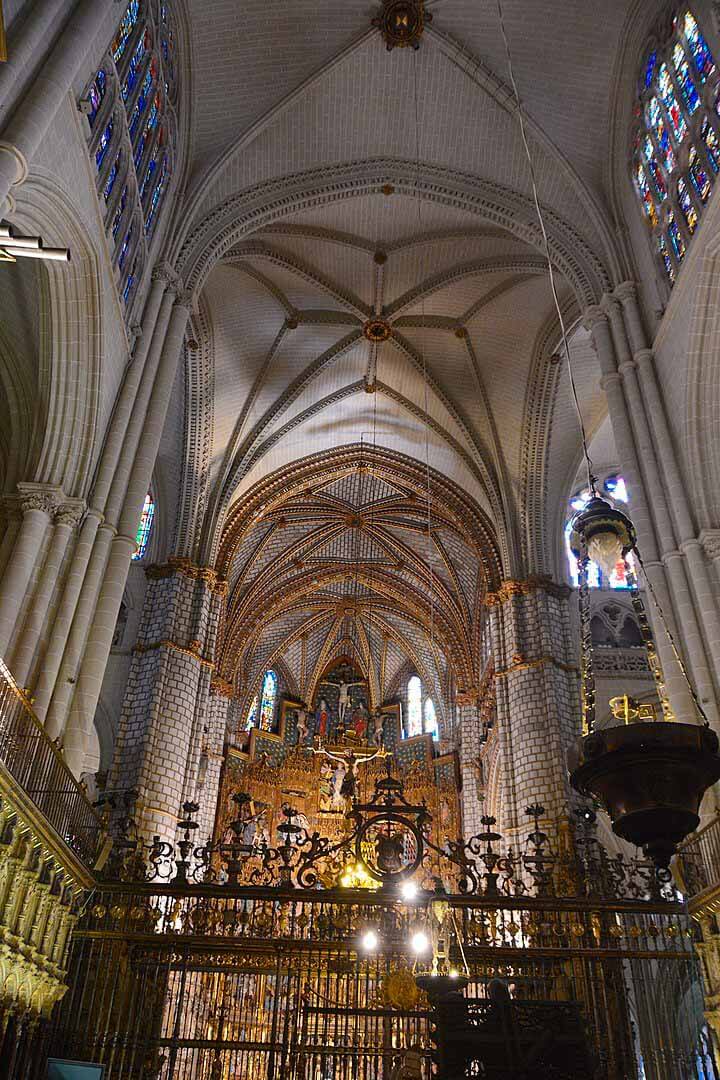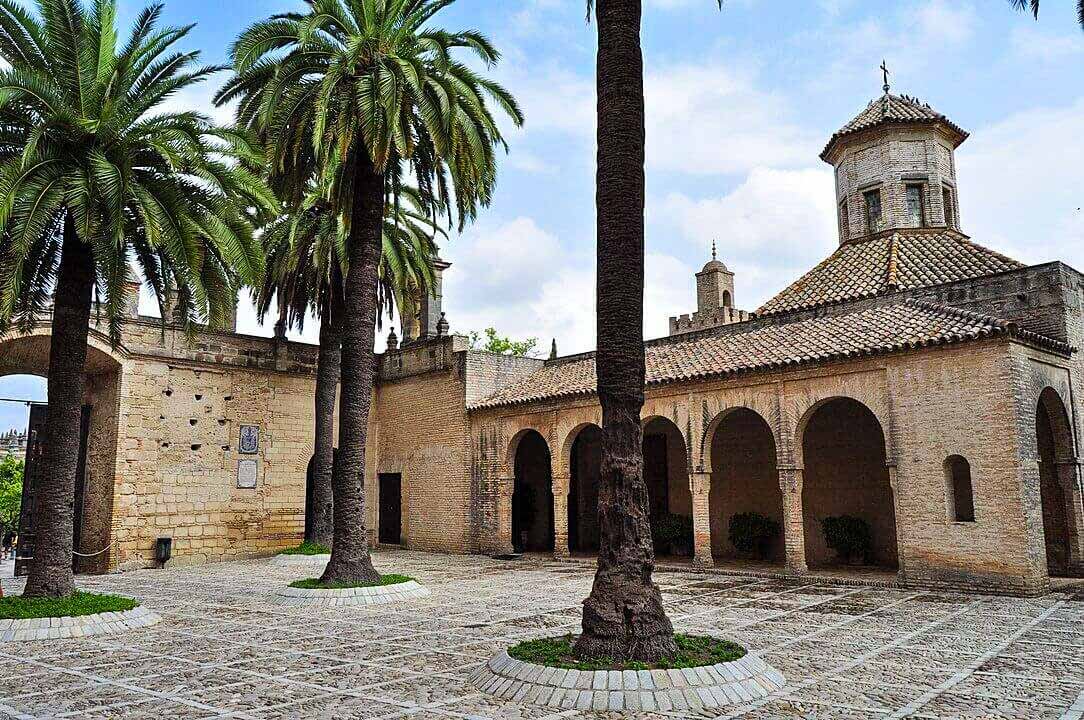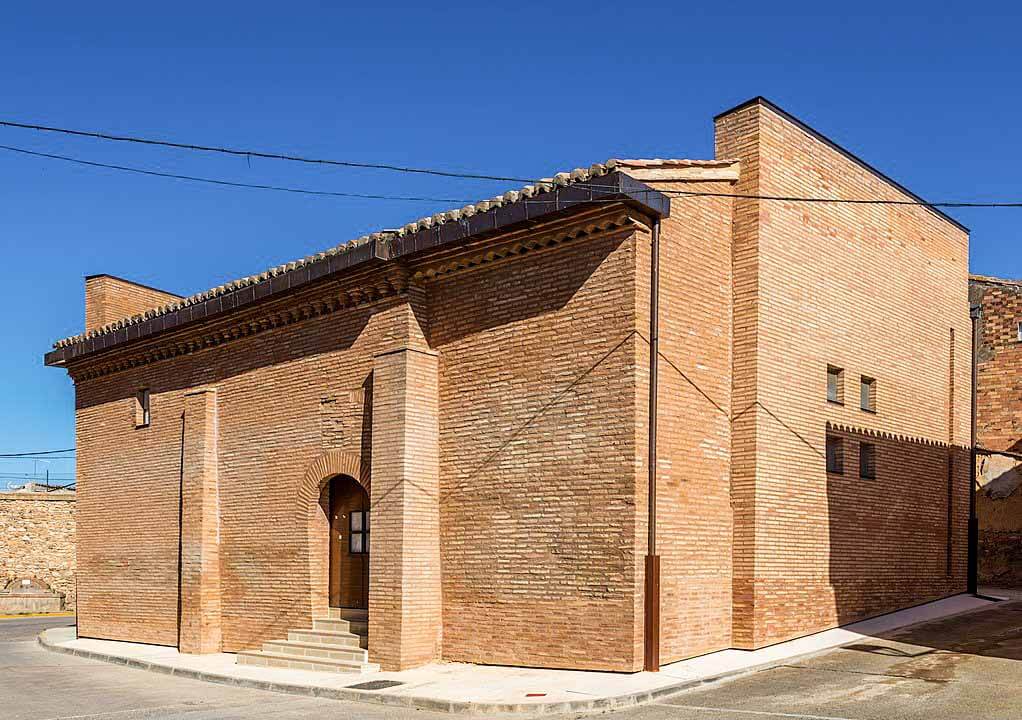Toledo, Spain
Coordinates: 39.857083, -4.023889
Toledo Cathedral, is a Roman Catholic church in Toledo, Spain.
The cathedral of Toledo is one of the three 13th-century High Gothic cathedrals in Spain and is considered, in the opinion of some authorities, to be the magnum opus of the Gothic style in Spain.
Origins
The city had been the episcopal seat of Visigothic Spain.
The Muslim invasion did not eliminate the Christian presence and the bishopric remained established in the church of Saint Mary of Alfizén.
The Visigothic church was torn down and the main mosque of the city of Toledo was erected in its place.
Some investigators point out that the prayer hall of the mosque corresponds with the layout of the five naves of the current cathedral; the sahn would coincide with part of the current cloister and the chapel of Saint Peter and the minaret with the belltower.
Using certain archeological data it is possible to discern an Islamic column mounted inside the chapel of Saint Lucy; the marble shafts that decorate the exterior of the choir are an improvement of an old Muslim construction, and the intertwined arches of caliphate style in the triforium of the main chapel and of the ambulatory coincide with the Muslim construction tradition of Cordova.
The Cathedral of Alfonso VI
The city of Toledo was reconquered by Alfonso VI, King of León and Castile, in 1085.
One of the points of the Muslim capitulation that made possible the transfer of the city without bloodshed was the king’s promise to conserve and respect their institutions of higher learning, as well as the customs and religion of the Muslim population which had coexisted with the larger Mozarabic population.
Naturally, the preservation of the main mosque was integral to this compromise.
Shortly thereafter, the king had to depart on matters of state, leaving the city in charge of his wife Constance and the abbot of the monastery of Sahagún, Bernard of Sedirac (or Bernard of Cluny), who had been elevated to the rank of archbishop of Toledo.
These two, in mutual accord and taking advantage of the absence of the king, undertook an unfortunate action which, as told by the priest Mariana in his General History of Spain, almost provoked a Muslim uprising and consequent ruin of the recently conquered city.
Provoking the muslims
On 25 October 1087, the archbishop in cooperation with Queen Constance sent an armed contingent to seize the mosque by force.
They proceeded to install a provisional altar and hung a bell in the minaret, following Christian custom to ‘cast out the filthiness of islam’.
The priest Mariana writes that king Alfonso VI was so irritated by these events that neither the archbishop nor the queen were able to prevent him from ordering the execution of all the active participants.
Muslims imploring the Christians usurpation as legitimate
Legend tells that the local Muslim populace itself helped restore peace, with its chief negotiator, faqih Abu Walid, requesting the king to show mercy, and imploring his fellow townsmen to accept the Christian usurpation as legitimate.
In gratitude for this gesture, the Cathedral Chapter dedicated a homage to Walid and ordered his effigy to be placed on one of the pillars in the main chapel, in this way perpetuating his memory.
Thus the conversion of the Toledan mosque was upheld and it remained consecrated as a Christian cathedral.
Mosques’s structure was not preserved
The building plans of the former mosque have not been preserved nor is the appearance of the structure known, but taking into account the preserved vestiges of mosques in other Spanish cities (in Seville, Jaén, Granada, Málaga, and including the Mosque of Cordova), it may be supposed that it was a columnary building, with horseshoe arcades on top of columns in revision of earlier Roman and Visigothic construction.
It is possible that it appeared very much like the Church of the Savior of Toledo, previously a mosque.


